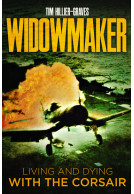Google Books previews are unavailable because you have chosen to turn off third party cookies for enhanced content. Visit our cookies page to review your cookie settings.
Landing in Hell (Hardback)
The Pyrrhic Victory of the First Marine Division on Peleliu, 1944
By
Peter Margaritis
Imprint: Casemate Publishers
Pages: 208
Illustrations: 32 b/w photos
ISBN: 9781612006451
Published: 19th November 2018
Imprint: Casemate Publishers
Pages: 208
Illustrations: 32 b/w photos
ISBN: 9781612006451
Published: 19th November 2018
You'll be £25.00 closer to your next £10.00 credit when you purchase Landing in Hell. What's this?
+£4.99 UK Delivery or free UK delivery if order is over £40
(click here for international delivery rates)
Need a currency converter? Check XE.com for live rates
(click here for international delivery rates)
Need a currency converter? Check XE.com for live rates
On September 15, 1944, the United States, in its effort to defeat the Japanese Empire, invaded a tiny island named Peleliu, located at the southern end of the Palau Islands. This island chain lay in the main line of the American advance eastward. The Pacific High Command saw the conquering of this chain as a necessary prelude to General Douglas MacArthur's long-awaited liberation of the Philippines.
Of all the Palaus, Peleliu, the second southernmost, was the most strategically valuable. It boasted a large flat airfield located on a relatively low plain at its southern end. If it was taken, it could be used as a major airbase from which the Americans could mount a massive bomber campaign against the Philippines if needed, and eventually against Japanese home islands. Except for the airfield, Peleliu was a typical humid tropical island, covered by dense jungle and swamps, with many coconut, mango, and palm tree groves.
The main amphibious assault was to be made by the famed First Marine Division under the command of Major General William Rupertus. The Pacific High Command was confident that victory would be theirs in just a few days, convinced that the Japanese defending the island were relatively weak and underprepared.
They were drastically wrong. The Peleliu campaign took two and a half months of hard bitter fighting, and just a week after landing, having sustained terrific losses in fierce combat, Chesty Puller’s 1st Marine Regiment was withdrawn. The entire division would be out of action for six months, with the three rifle regiments averaging over 50% casualties - the highest unit losses in Marine Corps history.
This book analyzes in detail the many things that went wrong to make these casualties so excessive, and in doing so, corrects several earlier accounts of the campaign. It includes a comprehensive account of the presidential summit that determined the operation, details of how new weapons were deployed, a new enemy strategy, and command failure in what became the most controversial amphibious operation in the Pacific during WWII.
There are no reviews for this book. Register or Login now and you can be the first to post a review!
About Peter Margaritis
Peter Margaritis minored in History at Ohio State University. A retired chief petty officer, he has an extensive military background in communications and naval intelligence. He now writes and lectures on military history.
More titles by Peter Margaritis
Other titles in Casemate Publishers...


















